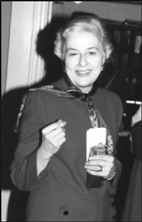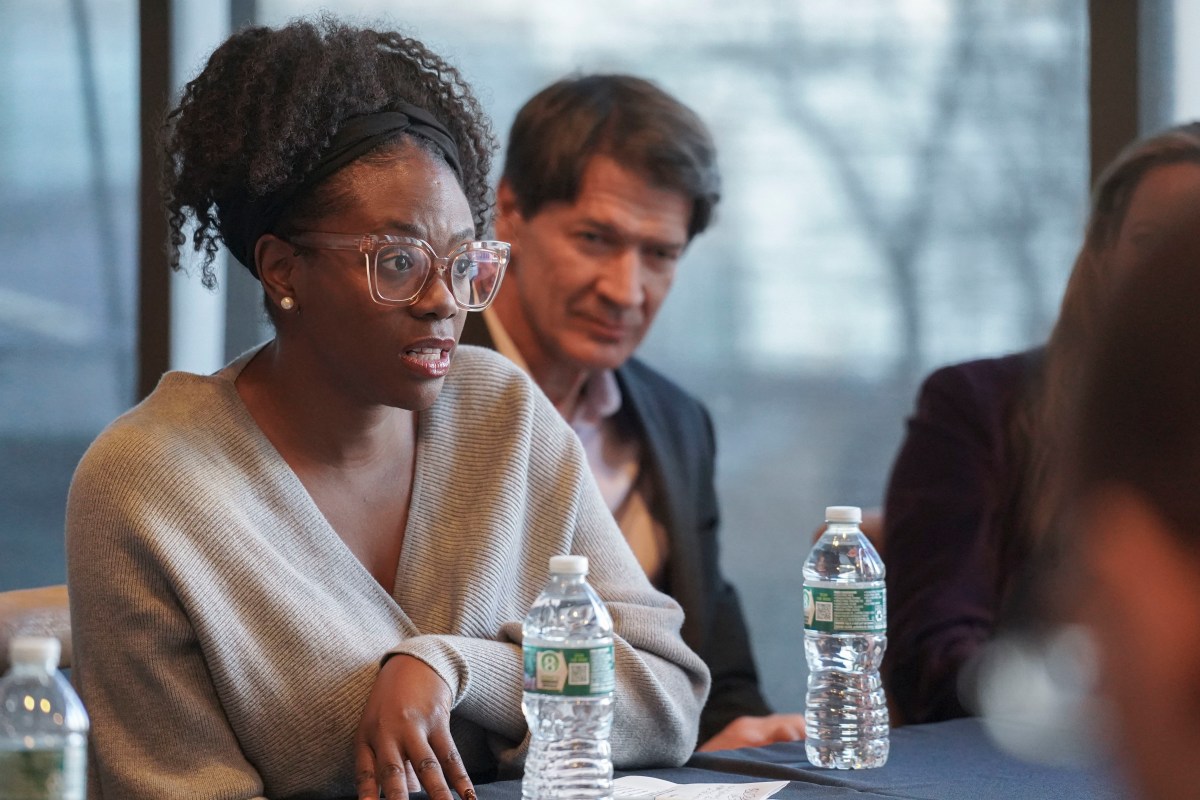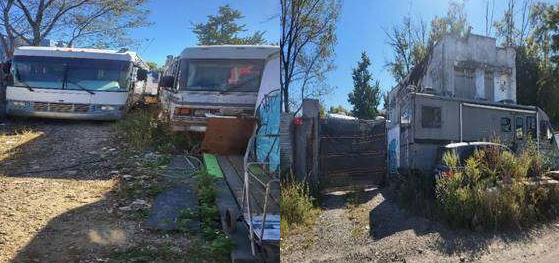By Albert Amateau
Regina Kellerman, an architectural historian who worked closely with the city during the founding of the Landmarks Preservation Commission and served as the first director of the Greenwich Village Society for Historic Preservation, died Tues., May 13, at age 84.
She had a pulmonary scarring condition that worsened over the past year, said Dr. Eugene Brody, her friend of 19 years.
“She was such an enthusiastic and passionate scholar and preservationist. The Village was so much in her blood,” said Emily Nolte, author of “It Happened on Washington Square” and a fellow member with Kellerman of the Washington Square Association. “She carried all that knowledge in her head.”
“When she spoke, we listened,” said Anne-Marie Sumner, of the Washington Square Association. “She knew the precise history of every site in the Village. We spent lots of time together walking and talking in the Village about the buildings and everything else.”
“Gina was the first director of the Greenwich Village Society for Historic Preservation and she laid the foundation for subsequent work that we and many other preservationists did,” Andrew Berman, G.V.S.H.P. executive director, said last week. “Her work on the book ‘The Architecture of the Greenwich Village Waterfront’ and the unprotected waterfront between 14th and Houston Sts. was the basis of the downzoning of the West Village in 2005 and the landmarking in 2006,” Berman said.
“She was the go-to person, a source of support and inspiration. You could call her about anything up until the time she became ill,” Berman said.
Born in Danbury, Conn., to Dr. and Mrs. Hubert Kohman, she went to Yale and Columbia universities and earned a Ph.D. at Penn State University. She went to work at J. Walter Thompson and married Richard Kellerman, a public affairs executive who served as the New York Police Department’s deputy commissioner for public information and later worked as public relations director of HIAS, the Hebrew Immigrant Aid Society. He died in 1980.
“Gina researched and wrote a history of a Charles St. building as a gift for friends, and liked it so much that she made architectural history her full-time career,” said Penelope Bareau, a fellow preservationist and a G.V.S.H.P. trustee.
After Penn Station’s demolition in 1962, Regina Kellerman became director of research and chief administrative aide to Professor James Grote Van Derpool, director of the temporary Landmarks Preservation Commission, and continued for another year after the commission became an official city agency in 1965. During that time she supervised an architectural survey of the five boroughs and made monthly reports to the commissioners.
She then became architectural historian for the Museum of the City of New York and the City Planning Commission and worked on a museum complex proposed for the Fraunces Tavern block in the Financial District but which was dropped in 1968. During 1969-’70 she was architectural historian at the Wave Hill Center for Environmental Studies. From the spring of 1970 to the fall of 1972 she was project historian on the Lower Manhattan dig on the site of the 17th-century Dutch Stadhuis (former City Hall), whose foundations were discovered on Lehman Brothers property.
From 1971-’75, she was a graduate teaching assistant to Professor Winston R. Weisman, head of the art history department at Penn State, where she earned her doctorate in art history. In the summer 1971 she supervised 18 Penn State graduate students in a study of the Soho cast-iron commercial district. She co-authored the report to L.P.C. that led to the Soho Cast-Iron Historic District’s designation in 1973.
From 1978 to 1980 she was a writer and editor with the Metropolitan Museum of Art. In 1981, she became executive director of the newly organized G.V.S.H.P. and edited “The Architecture of the Greenwich Village Waterfront” (New York University).
In a 1991 citation by the Victorian Society of America, Selma Rattner recalled that Kellerman “ferreted out primary documents that had not been touched for decades. I can recall one of many last-minute rescues when she and Professor Leo Herschkowitz stopped a garbage truck from carrying away a truckload of early documents that had been removed from the basement of the Surrogate Building on Chambers St.”
Since 1991, Kellerman had worked as a consultant on various projects and generously responded to calls for historic expertise from The Villager.
A tribute to her life and career will be held on Wed., May 28, at 5:30 p.m. at 20 Gramercy Park South.






































